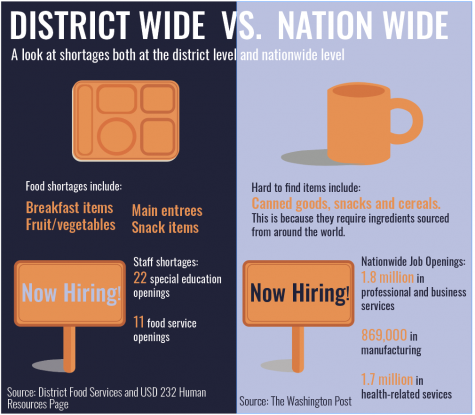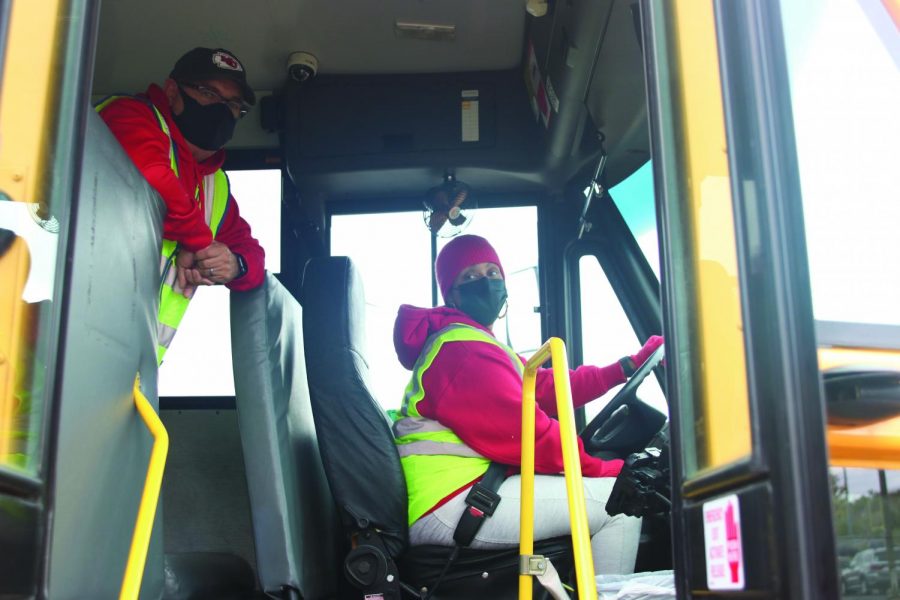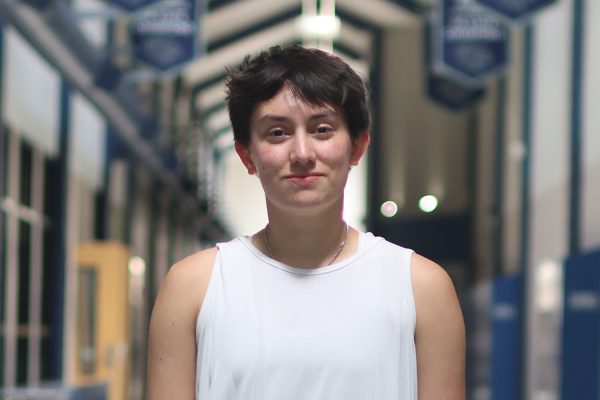District faces major staffing issues
Staffing issues throughout the district are resulting in increased stress in both staff and students
November 26, 2021
Due to COVID-19 and difficulties filling positions, the school district has faced multiple shortages this year, each affecting the district in a myriad of ways. While some of these shortages, such as a lack of certain food items, are material, many are staff-based, such as the shortages of bus drivers and substitute teachers.
The district has been working to ensure the increase in shortages re- mains manageable. With the district currently having 22 available jobs for special educators and 11 for student nutrition employees, district executive director of secondary education Brian
Schwanz explains how the heightened levels of staffing shortages have required the district to be flexible.“The amount of openings we currently have with paraprofessionals and student nutrition created challenges in maintaining services at expected lev- els,” Schwanz said. “As such, the district has had to adjust responsibilities on a daily-weekly basis to meet service levels.”
Schwanz elaborated that although the district has had challenges in facing issues presented by the shortages, it is not alone in these issues, and action is being taken to improve the situation and make the district’s available positions more desirable.
“Challenges in hiring are not exclusive to public education, as competition for available workers is evident across industries,” Schwanz said. “We requested that the Board of Education raise the pay for paraprofessionals and student nutrition employees, which was approved by the Board. Also, we are taking a recommendation to the Board of Education to raise the daily rate for substitute pay. We are hopeful these changes will help us in the cur- rent competitive hiring market.”
The cafeteria has also been affected by shortages of both staff and supplies. According to student nutrition assistant Pam King, the cafeteria has faced a variety of food shortages.

“[The shortages are] really across the board because we are short on main entrees, fruits, vegetables, lunch items, breakfast items [and] snack items,” King said. “For me, it’s the breakfast and snack issues that are most frustrating because that’s what I deal with.”
King has been disappointed by the shortages because she believes meals should be an enjoyable part of students’ days.
“It’s been very stressful. We’re all having to do a lot more, and some- times we may have to not put out as much stuff, we don’t have enough staff to accommodate it,” King said. “I feel like your meals like breakfast or lunch are a happy part of your day, and that it’s an important part of your day. And when we don’t have what you want and what you like, that is very frustrating for me.”
The district has also been facing a shortage of bus drivers. Junior Josie Foltz has noticed this shortage, and explained that her bus has been driven by several drivers due to staff shortages, occasionally causing her to arrive home later.
“We’ve had a consistent bus driver after the first couple weeks of school, but I’ve had a couple substitute drivers since then,” Foltz said. “During the first couple weeks, I had three differ- ent bus drivers. Our first driver trained a driver who drove us for a week, and then the driver that was just trained had to train our current driver the next week. I usually get home from the bus around 3:40 p.m., but when we were trying to figure out the route and were hav- ing different drivers, I would get home around 3:50 p.m. or 4:00 p.m.”
According to Schwanz, the short- age of bus drivers has also forced the district to adjust certain activities’ schedules.
“Although the district’s bus transportation provider continues to hire drivers, we have had to alter the times for when students leave school for activities so that we can continue to run our normal daily bus routes without interruption,” Schwanz said.
The district has also been dealing with a lack of substitute teachers, which, according to Schwanz, has forced teachers to look to one another for assistance.
“We have relied on current staff to help cover classrooms during their plan period or absorb a class when a substitute teacher is not available,” Schwanz said. “While this is not ideal, our teachers have stepped up to the challenge to help meet the needs of students.”













